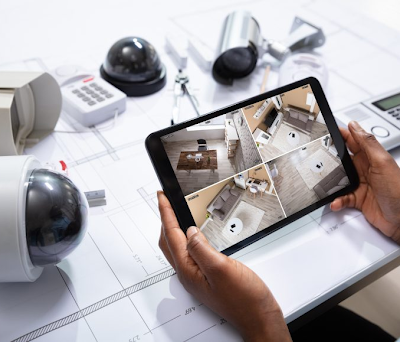Have you ever noticed how much technology has evolved and surrounded us in the last few decades? We just have to say, Alexa, Ok Google or Hey Siri to get our work done within seconds. Technology surrounds us more than ever we have experienced. Today, our houses are filled with smart tech devices such as smart lights, voice assistants, smart AC, smart fridges, smart clocks, smart TVs, smart curtains, smart doors, smartphones, and other countless things. These devices play many essential roles for us today, that we didn’t even know existed. For example, smart fridges can track food in the fridge and remind you to order groceries. We can’t even call these devices futuristic, they are being used at a large scale by normal people in their homes. However, with every technology, some risks remain associated– smart devices also pose security risks despite providing convenience. In simple words, any device having an internet connection is capable of compromising your security.
Smart devices can be hacked for stealing data through sources such as cameras, microphones, fingerprints, text, etc. Your personal data can be read, viewed, and deleted by hackers if the devices are not secured properly. A hacker’s target usually remains on your IDs, passwords, and financial data. By stealing your username and passwords, many smart devices with that account can also be hacked. Cyberattacks can be done through the smallest things such as hacking your central heating or cooling system and can torture you by controlling your home temperature until you agree to pay the ransom. By hacking a single device, hackers can use that device to create a botnet for infecting other smart devices. The most common type of botnet attack is known as Distributed Denial Of Service attack (DDoS) – in which services to users are denied by the hacker. Another common type of cyber attack includes ransomware, in which a user’s data is encrypted by a hacker and they demand a ransom in return to decrypt your data. Cryptocurrencies are another potential target of cyber attackers to engage in financial crimes through crypto mining.
Home is a place to feel safe and secure, families shouldn’t be living with the fear of their data being stolen and their security being compromised. There are various ways in which your device security can be compromised such as– using very common passwords, not changing passwords often, vulnerabilities in the device codes, and not updating devices regularly.
Things To Consider
In this digital era, it is extremely crucial to be aware of your cybersecurity– to keep yourself and your loved ones protected from cyberattacks. Before buying a new smart device, you must be sure enough about its security features. We have laid down a few points to consider before buying a smart device so that you will be able to make a more careful choice.
1. Actual Need
This is the first and foremost question to ask yourself– Do I actually need this device? We buy smart devices for our convenience but they should not be bought unnecessarily until you actually need them. The fewer the devices, the lesser the risks. If your goal can be achieved via a simple device, you should avoid buying smart devices that can pose security risks.
2. Strong Credentials
Credentials of new devices are usually easy to access, so they must be changed immediately after you buy a device. Choose your passwords very carefully, it should be something that only you know. According to research conducted by NordPass in 2021, the most commonly used passwords in the world included “123456”, “qwerty”, “password”, “abc123”, and many more extremely easy to guess passwords. Avoid making such foolish mistakes to prevent serious cyberattacks on your devices.
3. Notifications
App notifications are a key to a secure system. The app controlling your smart device account must notify you every time there is a change made to your account. This way you will be able to trace another person’s presence in your account and take measures accordingly. Always buy the devices that have a secure application to run them.
3. Device Update
It is rather an important question to ask yourself– Can the device be updated? Updatability of a device is important, in case a vulnerability is detected in a device, makers can upgrade the software to incorporate required changes, which will prevent it from cyberattacks. But if the device can’t be updated, it remains vulnerable to attacks. It should be your priority to make sure that the device can be updated in the future. An additional convenience would be to buy products that can be updated automatically to save you the hard work of installing updates regularly. In case you already have devices that can’t be updated, you should strengthen your wifi security or buy another device.
Another aspect to consider is– the manufacturer should take lifetime accountability or at least for an intended period to provide updates for your device. Because, if the provider stops giving updates, the device will be prone to attacks by hackers.
4. Bug Bounty Program
Good companies provide a scheme where if anybody can detect vulnerabilities in their code, the company will reward the detector. This is known as a “bug bounty” program. However, not all companies adopt this strategy but it is a good way to develop trust among the users and make developers serious about secure coding. Usually, detecting a cyberattack is like finding a needle in a haystack; but preventing attacks is not that difficult. Some basic steps can be followed to make it strenuous for hackers to gain access to your device such as– generating strong passwords, ensuring device support by manufacturers, and enabling auto-updates. Moreover, if you are suspecting that your device has been hacked you should immediately factory reset the device, change your account credentials and update if any.
6. Visual Indicators
Smart devices come with visual indicators thus letting the users know when they are being used. For example, smart cameras and speakers have LED lights to show that they are currently recording. This can be a huge help in staying aware of any privacy infringement. Some smart devices also come with physical barriers to prevent them from working while not in use, such as a camera with a shutter.
7. Two-Factor Authentication
You should make sure that a device supports two-factor authentication before buying it. In addition to your password, two-factor authentication works as an extra layer of security to prevent cyberattacks. Even if your credentials go into the hands of an attacker two-factor authentication prevents them from accessing your data, as it is always changing. Developers at a large scale have started adopting two-factor authentication but still, not all of them are supporting it. However, it is extremely crucial to incorporate additional security systems to prevent data theft in an era of emerging cyberattacks. Some developers also use OTP over a text message or an email; however, this code is not encrypted and can be intercepted. But something is better than nothing. A better way to ensure authentication is to enable 2FA with a third-party authentication app, such as Google Authenticator or Microsoft Authenticator. These apps generate OTP that expires within 30 seconds, which can be frustrating while accessing your account but it is worth the pain to stay protected.





